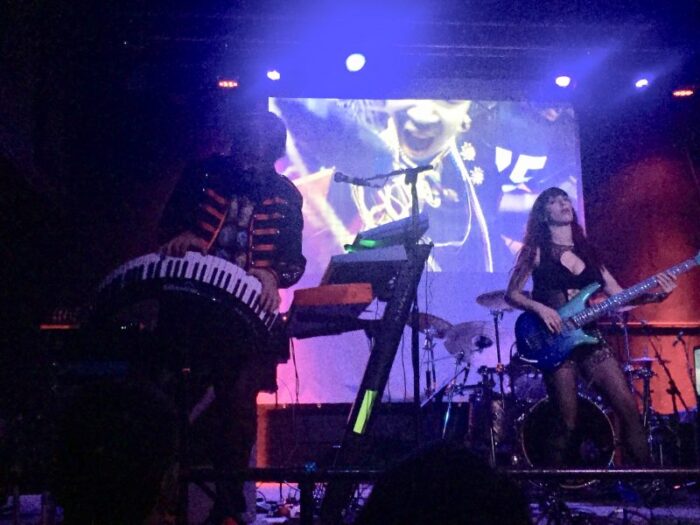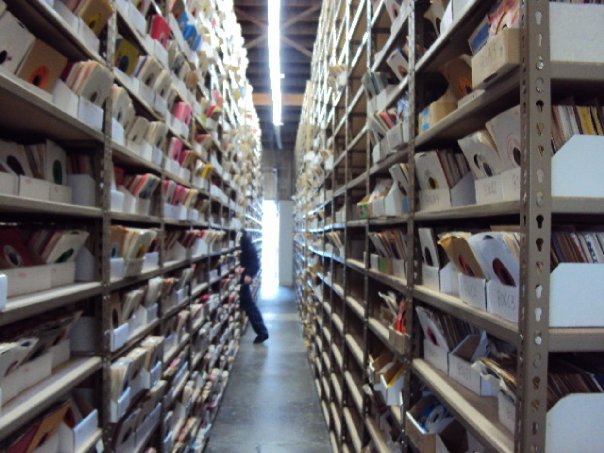
DJ Name: Rock n Roll Ghost
Freeform Show Name: Chilling, Thrilling Sounds of the Rock n Roll Ghost
Freeform Day/Time of Show: Each Tuesday from 4am-6am
Interview by: Beanie
Beanie:What’s your earliest memory of falling in love with Rock n Roll?
Rock n Roll Ghost: Hmmm… Well, the first record I remember buying was Steve Martin’s Wild and Crazy Guy, but in terms of the music I like, listen to and program for my show, it comes out of some cassette tapes my sister gave me after her freshman year in college when I was 14. I’d already been listening to some widely available punk rock – Sex Pistols, Ramones, The Clash – but these tapes were what most people refer to as “post-punk” – Wire, The Fall, The Birthday Party, plus some other US stuff, Flipper, X and The Gun Club. I’m very vocal about the fact that it was my older sister and these handful of tapes that completely changed my trajectory.
Beanie: Which ghost of rock n roll pasts haunts you the most?
Rock n Roll Ghost: Probably the first real shock to my system, in terms of accidental deaths, was D. Boon of the Minutemen from San Pedro, California. At the time, in the early 1980s, the Minutemen were at the tip of the spear of the American punk rock scene, although even now I feel ashamed pigeon-holing them into any genre, but they were ours and they spoke to us and so I call them punk rock because that’s what we were, Punks. The Minutemen were truly original, drawing influences from rock, jazz, punk, folk, soul and spoken word, overtly political in their left-leaning message, but could also be intensely personal with their music. Their song History Lesson – Part II from 1984’s Double Nickels On The Dime is such a beautiful and gentle ode to finding “one’s place,” it tightens my chest and moistens my eyes writing about it even now.
Beanie: What kinds of themes and experiments do you explore when preparing for a new set?
Rock n Roll Ghost: I have lots of records now and always try to vary my sets, themes are easier sometimes, prepping a set of LA or DC bands cuts the inventory down immensely, it’s actually kind of a cheat in some ways, because the theme becomes the thread that binds the songs, but mostly I want to make the music sound consistent to the listener and the experience entertaining. I’ll toss in short recorded lines from movies – some well-known, some obscure, some fun, some very niche-oriented – and use them as segways, in conjunction with the songs, or use songs as an exclamation to the line, something like: It’s 106 miles to Chicago, we got a full tank of gas, half a pack of cigarettes, it’s dark… and we’re wearing sunglasses. Hit it then slam into TV Eye by The Stooges. This example actually isn’t one I’ve ever done at Freeform Portland, but did on my first gig as a college radio DJ and recall getting a good response, it’s simple, keeps things fresh and makes it fun. It’s not a new thing at all, I remember hearing it all the time on radio in the ‘70s when I was young.
Beanie: What was the first concert you remember attending?
Rock n Roll Ghost: The first time I ever remember seeing live music played on a stage was the summer of 1981, I would have been 12 years old then and my family was on vacation in Aspen, Colorado. I saw a flyer that Pure Prairie League was playing some local bar, my sister had some of their records and we asked our parents to take us. In the summertime Aspen was very sleepy and it was a real local crowd, I’m sure it was my first barroom experience as well. I’ve been racking my brain to remember the first show I would have seen where I grew up in the DC area, and I think it was Let’s Active with the DB’s at the 9:30 Club in early 1985. I didn’t have a driver’s license, nor did the friend I went with, but his older brother took us. DC was great in that regard, if you were underage you could still get into bars and clubs to see the band, they just put a big magic marker X on the back of your hand showing you were under legal age to drink, the origins of the straight edge X.
Beanie: How did you decided to get involved with Freeform Radio? What’s your experience been like so far?
Rock n Roll Ghost: As earlier noted, I’d been involved with college radio in the late 80’s and early 90’s, so the idea of being a DJ wasn’t alien to me, but I didn’t even know Freeform Portland existed. I have lots of records that have been deleted from back catalogs, aren’t on streaming services or are just scarce, and I would make mix cassette tapes for people. When I was growing up we used to do it all the time, but, making them in this century, it was a quirky throwback and not so easy anymore, and the recipient knew it was a real labor of love. A friend working at another local community radio station recommended Freeform Portland and I applied. The application asked for a sample set list and I just entered the last mix tape I’d recorded. There are a ton of people who work at the station and the age range is vast, folks I would never meet, so often, if I’m in the area, I try to stop through and introduce myself to whomever is broadcasting. I find the esprit de corps at the station tremendous, and it’s really been a positive affect for me.



























